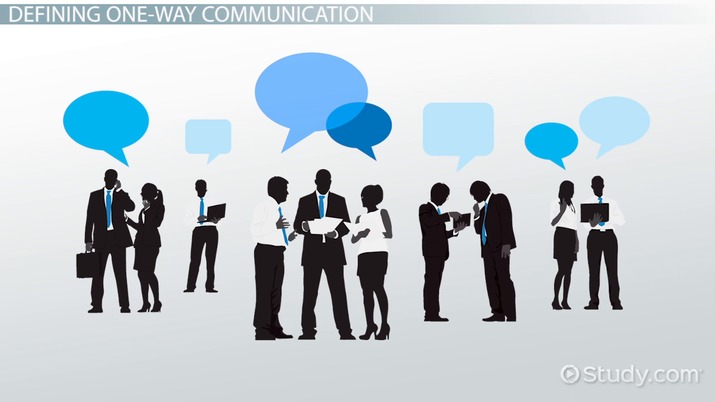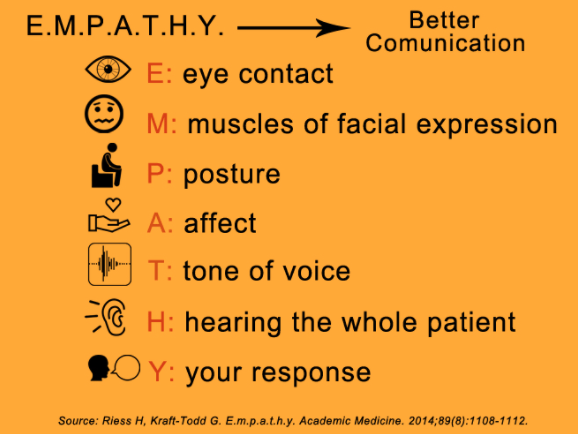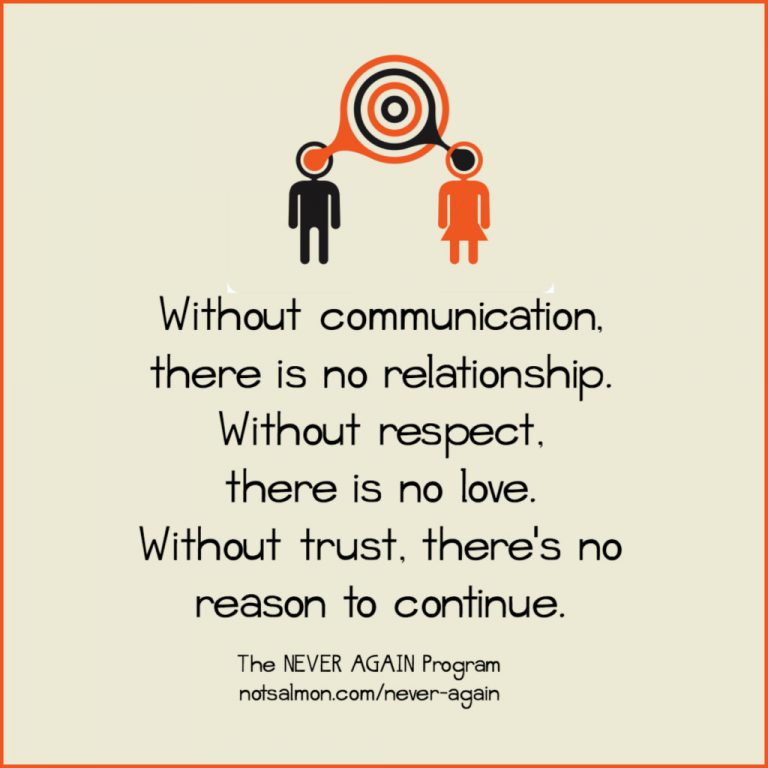What is One-Way Communication?
One-way communication refers to a one-sided flow of information, where the sender transmits messages without expecting a response from the receiver. It is a non-interactive form of communication commonly used in mass media, advertising, and public announcements.
One-way communication lacks feedback and can be effective for disseminating information to a large audience. However, it hinders dialogue and does not allow for real-time engagement or exchange of ideas. This type of communication is typically delivered through mediums like television, radio, newspapers, and billboards, where the receiver passively receives the message without actively participating in the communication process.
Understanding The Concept Of One-Way Communication
Understanding one-way communication is crucial in today’s world, where effective communication is vital. One-way communication refers to the exchange of information in a unilateral manner, where the sender transmits information without expecting a response. This communication style lacks interaction and feedback, making it less effective compared to two-way communication.
One-way communication is often used in situations such as public speaking, lectures, or mass media messages where the receiver doesn’t have the opportunity to respond. It is characterized by a top-down flow of information, with the sender having control over the content and delivery.
However, it can limit engagement and understanding, as there is no room for clarification or discussion. To ensure effective communication, it is important to choose the most suitable communication style that aligns with the desired outcome and audience’s needs.
Examples Of One-Way Communication
One-way communication refers to a communication process where information flows in only one direction, without any response or feedback from the receiver. Examples of one-way communication can be seen in various contexts. In media and advertising, one-way communication is prevalent through TV and radio advertisements that convey messages to the audience without any direct interaction.
Similarly, in public speaking, speakers deliver speeches without expecting immediate responses from the listeners. In education and lectures, teachers impart knowledge to students in a one-way communication manner. Despite the absence of a two-way exchange, these forms of communication still serve their purpose of disseminating information effectively.
Understandably, interactivity and feedback are limited, but one-way communication remains valuable in specific circumstances.
Pros And Cons Of One-Way Communication
One-way communication refers to a process where information flows in a single direction. It has both advantages and disadvantages. On the positive side, one-way communication allows for quick dissemination of information and easy control over the message. It is ideal for situations where feedback is not required or time is limited.
However, it also has its drawbacks. One of the main disadvantages is the lack of interaction and engagement with the audience. This can result in a decreased understanding or a misinterpretation of the message. Additionally, one-way communication can lead to a lack of trust and transparency.
It may prevent the receiver from expressing their thoughts or raising concerns. To ensure effective communication, it is essential to carefully consider the pros and cons of one-way communication and choose the appropriate method based on the specific circumstances.

Credit: www.cyberclick.net
How To Improve One-Way Communication
One-way communication refers to the exchange of information from a sender to a receiver without any opportunity for feedback or interaction. Improving one-way communication entails implementing strategies that enhance the effectiveness of the message delivery. To engage the audience in one-way communication, certain techniques can be employed.
These techniques include conveying information in a concise and clear manner, using visuals such as images or graphs to support the message, utilizing storytelling techniques to captivate the audience, and incorporating humor or emotion to connect with the readers. Additionally, structuring the content with subheadings and bullet points can make it easier to navigate and comprehend.
By employing these strategies and techniques, one-way communication can be enhanced, resulting in a better understanding and reception of the message by the audience.
The Impact Of Technology On One-Way Communication
One-way communication refers to a type of communication where information flows in a single direction. Technology has greatly impacted this form of communication, especially through social media platforms. Social media plays a significant role in facilitating one-way communication by enabling individuals and organizations to disseminate information without receiving immediate feedback.
With the rise of digital marketing, one-way communication has become more prevalent as businesses use various online channels to promote their products or services. This includes utilizing websites, social media ads, and email marketing campaigns to reach a larger audience.
The influence of digital marketing on one-way communication allows companies to create targeted messages and control the narrative they present to customers. As technology continues to evolve, the impact on one-way communication is likely to increase, shaping the way information is shared and received by individuals and organizations.
Case Studies On Successful One-Way Communication
Successful one-way communication can be seen in various case studies of marketing campaigns and effective public speeches. These examples showcase how companies and individuals have effectively conveyed their messages without requiring direct feedback or participation from the audience. By analyzing these successful instances of one-way communication, we can gain insights into the strategies and techniques employed.
These case studies highlight the importance of crafting compelling messages, selecting appropriate channels of communication, and understanding the target audience. Furthermore, they emphasize the significance of clear and concise delivery, captivating storytelling, and persuasive language. Successful one-way communication requires thoughtful planning, creativity, and a deep understanding of the intended audience.
By examining these case studies, we can learn valuable lessons on how to effectively communicate our messages without relying on direct interactions or feedback.
Frequently Asked Questions Of What Is One-Way Communication?
What Is One Way Communication And Examples?
One-way communication refers to a communication process where information is shared in only one direction, without any interaction or feedback from the receiver. Examples of one-way communication include a company sending out a press release, a radio broadcast, a television advertisement, or a lecture delivered by a professor.
In these instances, the sender of the message is the sole source of information, and the receiver is not encouraged or able to respond or engage in a conversation. One-way communication can be effective for disseminating information to a large audience, but it does not allow for immediate feedback or clarification.
It is important to note that in today’s digital age, most forms of communication tend to be interactive and two-way, with the opportunity for dialogue and exchange of ideas.
What Are Three Examples Of One Way Communication?
Examples of one-way communication include public speeches, lectures, and television broadcasts. Speakers deliver messages to an audience without expecting immediate or direct response.
What Is An Example Of One Way Two Way Communication?
Two-way communication refers to a conversation where both parties participate actively. An example of two-way communication is a telephone call where two individuals engage in a real-time exchange of information and ideas. Participants take turns speaking and listening, enabling immediate interaction and feedback.
This type of communication promotes effective understanding, collaboration, and decision-making. It allows individuals to express their thoughts and concerns while receiving instant responses from the other party. Two-way communication can occur through various mediums, such as face-to-face meetings, video conferences, instant messaging, or online chat.
These channels facilitate open dialogues, fostering stronger relationships and better comprehension between individuals or groups.
Why Is One Way Communication Good?
One way communication is considered good because it allows for clear and concise information delivery. It helps in situations where there is a need for quick and efficient dissemination of messages. One way communication allows the sender to have control over the information flow, making it effective in emergency situations or when conveying important announcements.
It also helps in maintaining focus and avoiding distractions that can arise from two-way conversations. Additionally, one way communication is useful in scenarios where there is a power imbalance or when the sender wants to establish authority. However, it is important to note that one way communication can be limiting as it does not provide an opportunity for feedback or clarification.
In conclusion, one way communication can be beneficial in certain situations but should be used judiciously to ensure effective and meaningful communication.
Conclusion
One-way communication is a form of communication where information flows in only one direction, without any feedback or interaction from the receiver. It is a common method used by businesses, organizations, and individuals to convey information, such as announcements, advertisements, or public messages.
One-way communication can be effective in delivering a specific message to a large audience, but it lacks the benefits of two-way communication, such as understanding and engagement. It is important to recognize the limitations of one-way communication and strive for more interactive and engaging forms of communication to build stronger relationships and foster better understanding.
While one-way communication has its place in certain contexts, it is essential to embrace the power of dialogue and feedback to create meaningful connections and promote effective communication in today’s digital world. By understanding the different communication methods available and leveraging them appropriately, individuals and organizations can enhance their communication strategies and reach their target audience more effectively.






